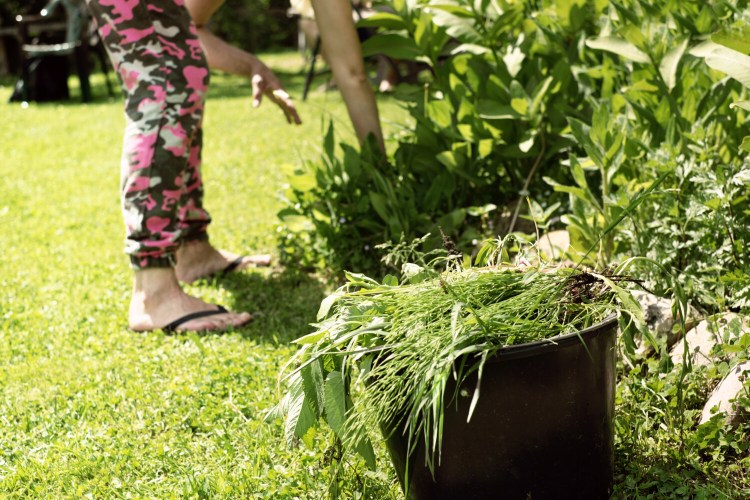You may be taking a break for the holiday week, but guess what? The weeds aren’t. They will continue to sprout and grow, and when you return home or your guests leave, expect to find unwanted plants to pull out.
Weeding can be simple or difficult. I’ll start with simple.
The key is how the gardens are created. In the vegetable garden, create straight rows of the crops you plant every spring in one area, spacing them 2 to 3 feet apart. Put perennial crops – asparagus, raspberries, strawberries, rhubarb and so on – at the edge of this area. In the flower borders, plant shrubs and perennials that you recognize easily, and don’t plant them too closely together.
When you notice more weeds than you want to see, grab a hoe and head to the garden. We have both an inherited narrow garden hoe and a stirrup hoe. Both work, but pick the one that feels comfortable to you. With this neatly arranged garden, you work the hoe through all the places where there are no desirable plants, whether flower or vegetable. If you find weed clumps big enough to be picked up, do so and put them in a pail for compost. Where the hoe has separated the top of the plant from the roots, smaller pieces can stay in the soil. After that, grab a hand trowel, look through the plants you mean to be growing and pull out any weeds intermingling with them. There shouldn’t be many.
More experienced gardeners sometimes graduate to a more natural-looking garden, allowing desirable plants (perennials, annuals and biennials) such as poppies, sunflowers, bachelor button, foxglove, echinacea and asters to self-seed. That is when weeding gets tough. Not only do you have to learn which tiny sprouts are desirable and which are weeds, you have to get down on your hands and knees to examine each sprout closely to decide whether it should stay or go. If it should go, dig it out with a trowel.
You will make mistakes. Just make sure the weeds you accidentally let grow are pulled before they create seed – which will create extra work for you in future years. I’ve gotten better at this type of weeding over the years, but I’m still learning.
— TOM ATWELL
Send questions/comments to the editors.


